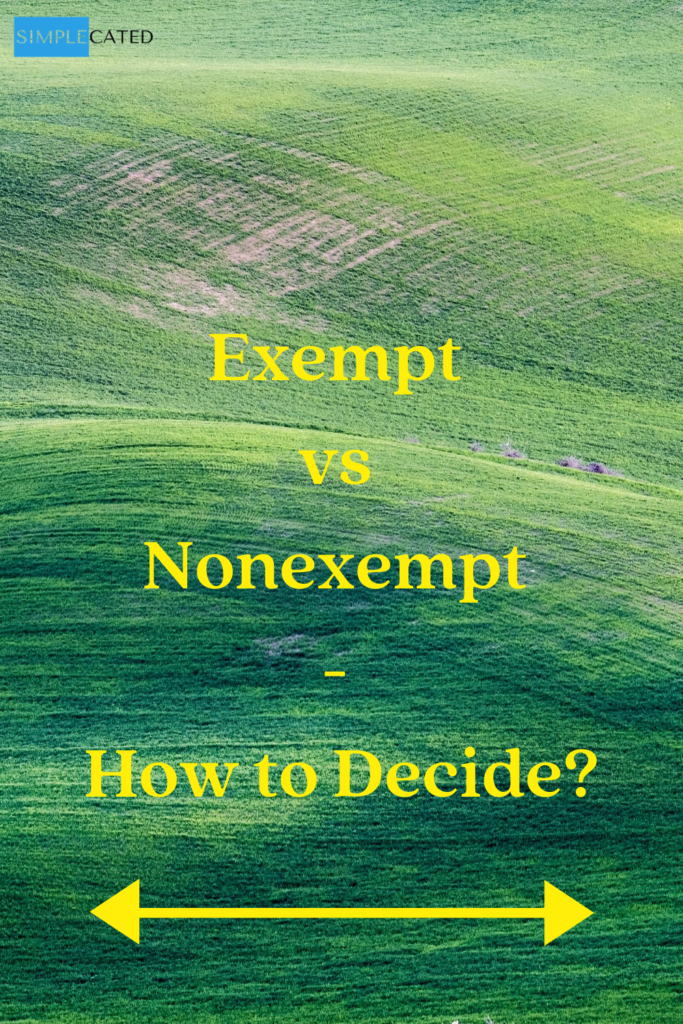You’ve identified a need to hire someone to do a certain job, so how do you determine whether it’s an hourly or salaried job? The Fair Labor Standards Act (FLSA) establishes the criteria for whether an employee is exempt vs. nonexempt.
Nonexempt = not exempt from overtime. These jobs are usually hourly, and overtime must be paid.
Exempt = exempt from overtime. These jobs are salaried, although just because a job is salaried doesn’t mean it’s automatically exempt. The job must meet FLSA exemption criteria.
The starting place is nonexempt. If a job ends up meeting certain criteria, it can be exempt. The easiest thing is to have all nonexempt jobs be hourly. That way, you keep it clearly differentiated which jobs qualify for overtime and which ones don’t.
It’s also important to think about this in terms of the job, not the person. Evaluate the job itself to determine whether it’s nonexempt or exempt. You want to avoid it seeming like the decision is personal, and you want everyone in the same job to be treated the same way.
According to the FLSA, nonexempt employees must be paid at least the federal minimum wage for hours worked, which is currently $7.25/hour. (Remember that states can have their own higher minimum wage.) They must also receive overtime of at least 1 1/2 times their regular rate of pay for any time worked over 40 hours in a workweek. On a strategic note, though, keep in mind the importance of providing a living wage to your workers, which isn’t likely to be accomplished if this is all you pay your employees.
There are 4 main white-collar exemptions – executive, administrative, professional, and outside sales. There are also some exemptions for computer employees.
For each category, employees must meet the criteria and must be paid at least a certain amount. Effective January 1, 2020, the FLSA ruled this amount is $684 a week ($35,568 annualized). Up to 10% of this may be provided through non-discretionary bonuses and incentive payments, such as commission. (Note that this requirement doesn’t apply to some jobs in the professional exemption category such as teachers, lawyers, or doctors. It also doesn’t apply to outside sales.) You’ll want to review the jobs in your company to make sure they are correctly categorized.
If the salary threshold is met, then the following FLSA exemption categories could apply. View the more detailed fact sheets if you think any of these might apply.
- Executive exemption – Primary duty is management of a subdivision, department, etc., manages the equivalent of at least 2 full-time employees, and is either able to make employment status decisions directly (such as hiring, firing, promoting) or be influential in these decisions.
- Administrative exemption – Primary duty is performing office work or other non-manual work directly related to the management or business operations of the company and must routinely require the use of discretion and independent judgment “with respect to matters of significance.”
- Professional exemption – There are 2 types. (1) Learned professional – primary duty is performing intellectual work in the field of science or learning (which required additional education beyond high-school level) and regularly exercising discretion and independent judgment. (2) Creative professional – primary duty is performing work “requiring invention, imagination, originality or talent” in an artistic or creative field. This exemption also applies to teachers.
For the Outside Sales exemption, the primary duty is making sales, either directly or through obtaining things like orders or contracts, and the work is regularly done away from the company building.
There are also some exemptions for computer employees, such as computer systems analysts and software engineers, who perform tasks such as systems analysis or designing and testing computer programs.
To make sure your employees are classified correctly as exempt vs. nonexempt:
- Review your job descriptions and make sure they accurately describe the job. The content of your job descriptions should help you determine whether they meet any of the above white-collar exemptions. If a job description is accurate but you aren’t sure whether it meets an exemption, then the best thing is to make it nonexempt.
- Review your pay ranges for each job compared to the salary threshold. The best thing is to make a job either exempt or nonexempt. If you have both nonexempt and exempt employees in the same job, you’ll add extra work to your plate because you’ll have to have a policy on how you handle changing employees to exempt, you’ll have to review everyone every time you give pay increases, and it could hurt morale to have a nonexempt employee working alongside an exempt employee. Way too complicated! Keep your life simple, and categorize each job as exempt or nonexempt. If you find that any of your pay ranges dip below the salary threshold, decide a consistent way to address that.
- As a general rule, a job should be either exempt or nonexempt. However, you might need to consider whether you’ll have employees who are in exempt jobs and work part-time. If so, you may need to consider a point at which those part-time employees would need to change to nonexempt if they work below a certain number of hours per week. They would still remain in the same job, but they would clock in and out and be eligible for overtime.
Correctly determining which jobs are exempt vs. nonexempt can be tricky as it can be hard to figure out how the FLSA exemption criteria relate to your particular jobs, so seeking guidance from legal counsel can help you make sure you’re making the right determination. This process can be time-consuming, but remind yourself that making sure you’re paying your employees correctly now (1) is the right thing to do and (2) is much easier than having to deal with litigation!
Photo credit: By Jupiterimages / Canva





